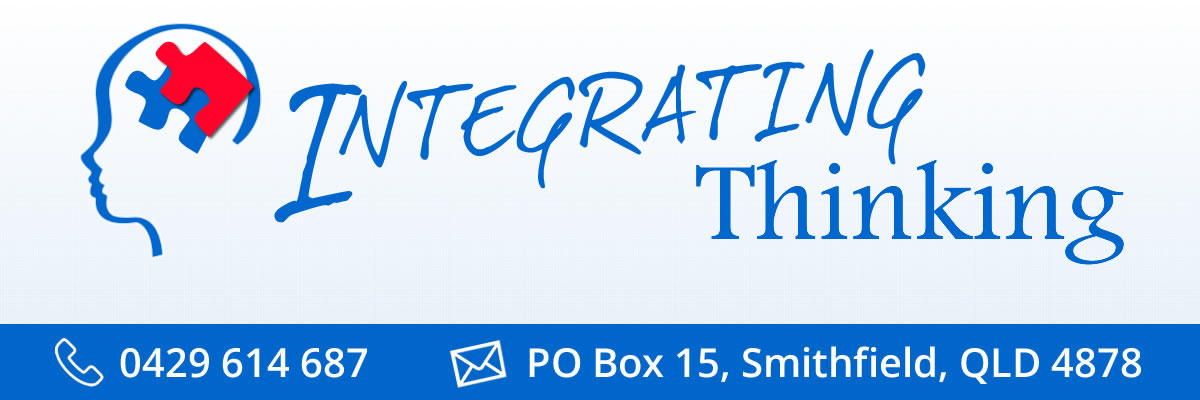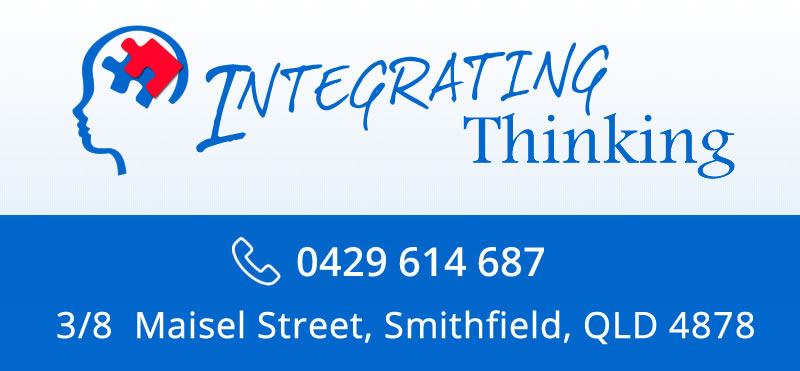Learning is a Body to Brain Story
What’s the body got to do with learning success?
In a nutshell: If the body doesn’t support learning, it can interfere with learning.
Helping the body support learning is and has been, the focus of my work for quite a few years. And, one of the main things I’ve learned is that if the basic body systems that support learning aren’t working well or are immature, the brain has to work overtime to learn. For some of us, it is incredibly hard. Academic learning suffers and what shows up in the classroom is often seen as learning difficulties or behaviour challenges.
In my practice as a neuro-developmental educator, I work with children who struggle with reaching their learning potential. They have difficulties reading, writing, concentrating and engaging with learning activities. It isn’t a matter of them just focusing better and practicing more reading/writing/mathematical algorithms etc. The children I see, and there are more of them it seems, tend to be fighting their bodies to participate in the learning opportunities presented to them. I use the term “fighting their bodies” because those are the words they use in my practice.
What starts as little “learning cracks”, “slight difficulties” and “learning challenges”, often become gaping gaps as they progress through the year (or years). Children start to fall behind expected norms and standards of academic achievement, and, they often say and feel that they are stupid, dumb or just not cut out to learn at school. Usually, this translates or presents as behavioural difficulties, lack of engagement, becoming a distraction in class, hating school and reading. These challenges aren’t pleasant for them and, sometimes, impact on those around them.
When I look at the way these children’s bodies work, it often becomes clear that actually, they aren’t ready to learn the way that they are required to learn in most of our schools. Their bodies aren’t well prepared and, consequently, they aren’t primed for learning. Even though teachers may be differentiating their curriculum and classroom ways to meet diverse needs in their classroom, it just isn’t cutting it for these kids.
What’s the problem? And, what does it mean for you as an Educator?
First, let’s look at the elephant in the room.
Am I suggesting that all responsibility for dealing with these learning challenges lies with you as a teacher and that you have to fix them? Am I suggesting you need to do more? And, am I looking to continue to overburden an already overloaded curriculum with more tasks and adaptations for you to manage and squeeze into the day?
Before I answer those questions, let me be clear from the start: there is no way I am participating in a “teacher blaming game” – I have too much respect for you, your job and the challenges you face educating our children. I’ve been there, and I’m not there now, so I can’t and won’t cast stones at you. I have, however, done lots of work and research on learning, how we learn and teacher’s and educator’s professional learning. That’s where I can offer some thoughts and perspectives for you to consider.
So, the honest answer to those elephant-in-the-room type questions I mentioned earlier, is “Yes and No”. Mainly “NO,” but let me tell you why it’s both.
It does mean we may need to help you look at and understand how and why these learning challenges may be happening in your classroom and WHY these children may be struggling. “Why the body is essential for learning” is a knowledge gap that teachers I work with have recognised and addressed with success in their learning contexts.
In order to “Know our students and how they learn” (that first Australian Professional Standard for Teachers) we need to understand the neurodevelopmental processes that guide learning because learning is just as much a body thing as a brain thing. Particularly in the early years, but in any learning activity and at any age.
In the early years of life, it’s the body and movement that leads our brain development. If our body systems, which are developed in our early years, aren’t mature enough to help us learn academically, we can struggle when it comes to learning in a more formal learning or classroom situation, and many students do.
But, all is not lost. The beauty of neuroplasticity and developmental movement patterns is that we can revisit and mature these body systems to provide a more effective foundational “body” base to help support and improve “brain” learning.
I know many more children are presenting in your classrooms as “neuro-diverse.” And, it is your role to cater for this diversity in your class. It’s your role to differentiate your curriculum delivery and progress the learning of all the students in your care. That’s a challenge – a huge one. And it can be overwhelming. The number of teachers departing from the profession citing behavioural issues and associated complexities of meeting student learning needs in their classes as part of their reason for leaving is growing and a testament to that sense of overwhelm.
I’m suggesting that perhaps there are gaps, missing pieces, in our knowledge and understanding about how children learn from the beginning and, how they learn how to learn.
We need to implement current research and knowledge that neuro-development and neuro-science offer us to help us understand and work more effectively with our diverse students.
We need to understand more about how the body leads and supports learning so that we can know and understand our learners better, especially how they learn.
Teachers who have completed extra work and study in this area, and then implemented strategies to help student learning by recognising the role of the body in the learning process, have found considerable gains in student engagement, readiness for learning and improvement in standardised academic testing.
What’s the difference for these teachers in their classrooms? They’ve focused on and taken the time to learn about how the body, particularly the neuro-motor and sensory systems, are foundations for learning success and, they have learned how to support those systems in an educational setting. They recognised the gap in their professional knowledge, found this work and have implemented daily strategies and approaches that haven’t overloaded their planning or curriculum work, and, they have seen great results.
How do you learn more to fill this same knowledge gap?
I began this article with this statement: “If the body doesn’t support learning, it can interfere with learning.” It’s time in my professional journey to share some of the insights and knowledge I have about the “Body to Brain Learning Story” and how the body supports and helps us learn.
If you would like to learn more about this body to brain learning story, then click on the “Tell me more button” below. It takes you to a page that includes a form for you to register your interest in the program and will provide you with more details. When you register your interest in the programme I will email you a “Body to Brain Learning Educator’s Checklist” that you can use to start identifying and reading your students’ body language. It’s your student’s body language that tells you there may be neuro-motor and sensory maturity issues at play because the body tells the learning story for our students.
As I have already said, we need mature body systems to provide strong foundations for successful learning. A student’s body position, posture, coordination, movement patterns etc. can tell us the level of maturity of these foundational learning systems. The “Body to Brain Learning Educator’s Checklist” checklist gives you a “heads up”, a starting base that you can use to start to see the body language and learning story of your students. It will begin to fill some of the “gaps” in your knowledge in this aspect of learning that I didn’t get at Uni, and, I’m guessing, you probably didn’t either.
In addition to the “Body to Brain Learning Educator’s Checklist,” I’ll send you a follow-up email. In that email, I will tell you about some of the other opportunities there are to learn more about this significant educational work, including a short introductory course of 5 presentations called “The Body Tells the Learning Story…” This short course provides you with more information about why the body and it’s processes underpin successful academic “brain” learning.
“The Body Tells the Learning Story…” is a 5 part series of 50-minute presentations introducing the neuro-motor and sensory systems that support and provide strong body-based foundations that help successful brain learning. In particular, “The Body Tells the Learning Story…” provides an introduction to the neuro-developmental processes that impact on learning success. The five parts of this story include:
- An overview and introduction: Why Learning & Learning Challenges can be a Body Story.
- The Balance and Co-ordination Learning Story,
- The Vision Learning Story,
- The Hearing Learning Story, and
- The Movement Learning Story.
“The Body Tells the Learning Story…” is a mini-series of professional learning opportunities presented online in 5 x 45 – 50-minute presentations. The program includes practical ideas and some bonuses that you can use straight away. At the end of the program, I’ll send you a poster outlining how the body supports learning. You can use that poster to explain to your students and their families what it is that the body is telling you about their learning story. I’ll also give you some suggested readings and reference lists if you want to delve deeper into this area of educational work. And, if the planets align in this uncertain world, there will be opportunities for you to hear from practitioners in the field who can tell you what this approach looks, sounds and feels like in their schools. They can share stories of the success they’ve experienced by incorporating this method in their practice every day.
We all want professional learning opportunities that are:
- practical,
- can be implemented relatively easily without massive changes in our daily ways of working,
- can mean we are delivering the mandated Curriculum (not adding to it) and,
- most importantly, can help our students address some body-based learning challenges that may be limiting their current learning success.
“The Body Tells the Learning Story…” is designed to be one of those programmes.
If you would like to join me in this professional learning story, then please, click on the link below, sign up to our email list, and I will start the ball rolling for you.
I am really looking forward to sharing what I know about this aspect of learning. And, I’m also super excited about helping you on your professional learning journey because, when it comes to the person who can make a significant educational difference for students in your classrooms – it’s you.



